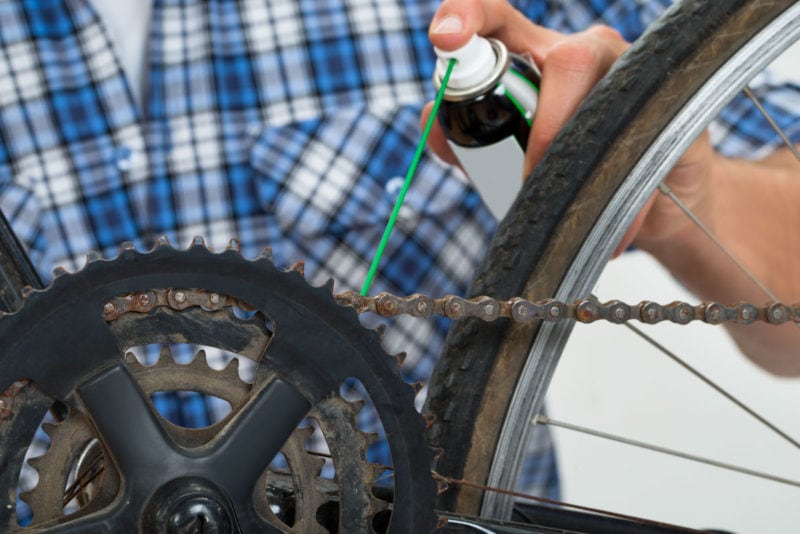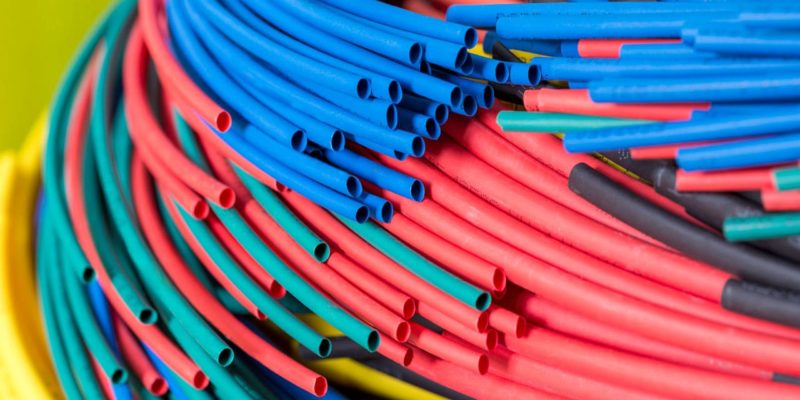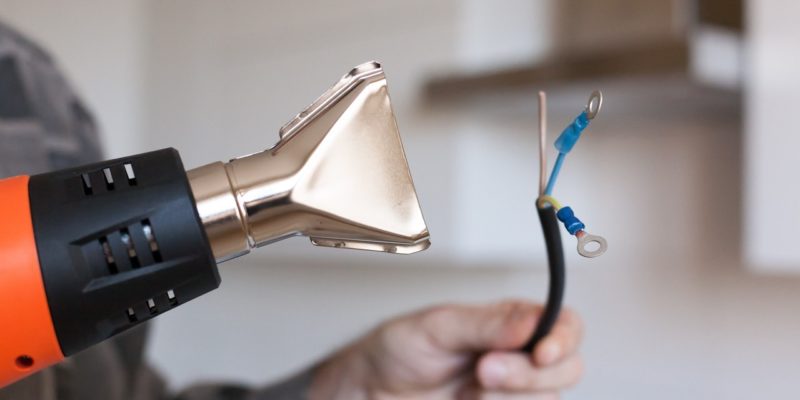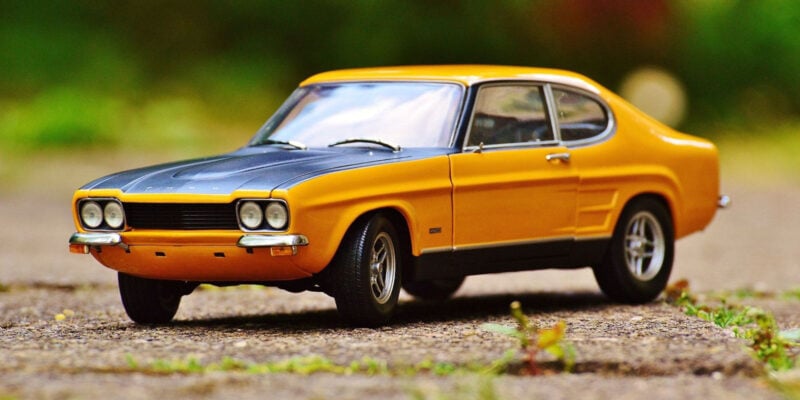More often than not, you can find a can of WD-40 in someone’s toolbox, household or garage. Originally developed for the military, it is now used for hundreds of DIY fixes, from cleaning rust to removing paint smudges. You might have even heard of it in some form of the saying “If something moves and it shouldn’t, use duct-tape. If something doesn’t move and it should, use WD-40″.
When looking online, you will see people recommending WD-40 as a lubricant. But you also encounter others that are strongly against it. So what should you do?
In this article, I will explain if and when you should use WD-40 as a lubricant and why this is a controversial topic. At the end, you will know exactly what to do to keep your bike parts, garage door or sewing machine moving smoothly and silently.
What is WD-40?
WD-40 is a multi-purpose product that is typically used to remove corrosion, prevent rust and get all kinds of things unstuck. Part of its versatility is that it is safe to use on metal, rubber, wood and most plastics.
The standard packaging is a metal spray can with a gas propellant, but it comes in a non-aerosol version as well.
What Does ‘WD-40’ Stand for?
WD-40 stands for Water Displacement, 40th formula. It was originally developed to remove water from the outer skin of Atlas missiles to prevent rust and corrosion. It took 40 attempts to get to a successful formula.
Should You Use WD-40 as a Lubricant?
While WD-40 does have some lubricating properties, it is not a good lubricant and should not be used for this purpose. Using it on anything that needs proper lubrication (bike chains, treadmills, garage doors, etc.) will not give you the results you want.
The main reason for this is that only a fraction of WD-40 is made up of lubricants. And these are only light mineral lubricants, unsuitable for any serious friction or heat.
The rest of the product is made up of compounds that aid penetration. These also have lubricating properties, but because they are volatile compounds that evaporate over time, their effect does not last.
On top of that, both the application of WD-40 and its evaporating components dissolve and displace existing lubricants, like lithium grease or graphite.
What Happens if You Do Use It to Lubricate?
First, the WD-40 loosens rust and corrosion, which it actually does well. For a while, parts that you applied the product to will move smoother than they used to.
After the volatile compounds have evaporated, however, moving parts will start to seize up again. Crud, grime and particles start to accumulate on the leftover WD-40 and you will be in the same as or a worse position than you started.
In situations with extremely low demands, like indoor door hinges, WD-40 does lubricate for a while. But on parts that move with more friction, speed or heat, it will stop lubricating properly in no-time. The same goes for outdoor applications, where exposure to the elements becomes relevant.
On bike chains, for example, you can expect to have to re-apply WD-40 after every 10-20 miles of riding to maintain lubrication.
Regardless of the application and the stresses involved, you are better off with a real lubricant.
So Why is It So Often Recommended as a Lubricant Then?
From what I can see, there are two main reasons why WD-40 is often recommended as lubricant.
It Gets Things Moving
Firstly, WD-40 gets things unstuck, moving and silent again. Many assume that this is because the product lubricates surfaces that are in contact with each other. In actuality, this is more because of its solvent properties. WD-40 dissolves and removes rust, crud and other gunk that causes parts to squeak and seize up.
Plenty of people have a can of WD-40 in their shed that they simply use for everything. If you never used real lubricants, it is perfectly reasonable to think that all lubricants work like WD-40. Only when you switch to a proper grease or oil you find out that things can move significantly smoother for a longer period of time.
It Technically is a Lubricant
Secondly, it is marketed and sold as a lubricant. And while that is technically correct, that does not mean that you should use it as one. Let me explain.
A lubricant is a substance that reduces friction between surfaces that are in contact with each other. There are many liquids (and even solids) that meet this criterion. Even plain water is a lubricant, albeit one that does not give good results.
WD-40 is similar. Its lubricating properties are limited and they are only around for a short amount of time.
So What Should WD-40 Be Used for?
The main strengths of WD-40 are its low viscosity and solvent properties. This makes it ideal for entering small gaps and dissolving rust, grime and other stuff that causes things to get stuck.
Anything that has gotten stuck, dirty or rusty over time, you can get loose and clean with WD-40. A good example is rusty bolts and nuts.
Loosening and cleaning is often only the first step of the process, however. To keep things quiet and smooth for a long time, you want to follow up with a proper lubricant.
How to Use WD-40 the Right Way
To get long term results with WD-40, you need to do something more than spraying it and leaving it on. The following steps will give you significantly better results.
- Apply WD-40 to the surfaces that you want to lubricate. This loosens any rust, dirt and gunk. At the same time it helps dissolve old lubricant.
- Use some kind of rag to wipe the sludge off. The parts should be as clean as possible.
- If in step 2 you have trouble removing all grease, you can use a degreaser to make things easier.
- Now apply a real lubricant. In most situations, either Tri-flow (a lighter oil-based lube) or white lithium grease (a thicker grease) will solve all your problems.
With these steps, you get smoother, longer lasting lubrication that is more resistant to heat, friction and outdoor elements.
Generally, you want to use light oil lubricants for high-speed and high-friction applications. Heavier grease lubricants are better suited for heavy loads and exposure to rain, snow and extreme temperatures.
Lubricating Bike Chains
Lubricating a bike chain with WD-40 is a recipe for failure. Bike chains have to deal with a significant amount of torque and speed, and WD-40 is way too light of a lubricant to deal with that.
You might see a limited lubricating effect for a short period of time, but WD-40’s volatile compounds disappear too quickly to make it a practical solution.
Instead, use Tri-Flow or an actual chain lube designed for bike chains. Not only do these last longer, but they also handle dirt better. Muc-Off Dry Lube is a popular choice for this.
Garage Door Openers
When lubricating a garage door opener, you want to use a grease instead of an oil. The opener carries a heavy load and is exposed to frequent temperature changes. Dust and dirt are common in garages as well. Light oils (especially WD-40) are no good for that.
While you can use WD-40 to clean rust and debris from moving parts of your garage door opener (chains, sprockets, levers, etc.), it is important to follow this up with a grease for long term protection and lubrication. White lithium grease is more than good enough for this.
Treadmill Walking Belts
Treadmills are a bit of a special case. To lubricate their walking belt, it is nearly always recommended to use a 100% silicone lubricant. Using anything else can cause serious degradation of the belt.
For other components of the treadmill you can use other lubricants, like PTFE-based ones. It is always best to check the manual of the specific treadmill you have for recommended products. But whatever it says, I am certain that it does not recommend WD-40.
Door Hinges
Lubricating door hinges with WD-40 is generally not advised. While it does give adequate results on squeaky indoor door hinges, you are still better off with a real lubricant.
For outdoor door hinges, like those on car doors, garage doors or shed doors, you want to make sure to use a heavy grease-based lubricant. Rain, snow and wind get rid of light lubricants in no-time.
My go-to for this is lithium grease. It is weather-resistant, capable of handling high temperatures and has no trouble with heavy doors.
Simply apply the grease to the hinge(s) and move the door back and forth so that the grease can work its way into the hinge. After that, wipe away any excess from the outside of the hinge to avoid attracting unwanted dirt.
Cleaning the hinges with WD-40 beforehand is not a problem.
Sewing Machines
Sewing machines contain many small components that operate at high speeds. Lubricating these with grease is not a good option, because it is way too thick.
Using WD-40 for this is not a good idea either. Its residue can cause sewing machine components to gum up and get stuck. Plus if it comes into contact with fabric, it will create stains.
The only product that is truly safe to lubricate a sewing machine with is an actual sewing machine oil.
Conclusion
WD-40 is an organic solvent that excels at removing rust and dirt from surfaces that are stuck together. For lubrication, however, it is not a good option.
While WD-40 is technically a lubricant, it does not last for a long time. And during that short period, it is not capable of handling any serious speeds, friction or environmental exposure.
For the best results, only use WD-40 for loosening and cleaning. Then wipe away the sludge that has formed, before following up with lubricants like Tri-Flow or white lithium grease. For certain applications, like treadmill belts and sewing machines, you want to use a more specialized lubricant.
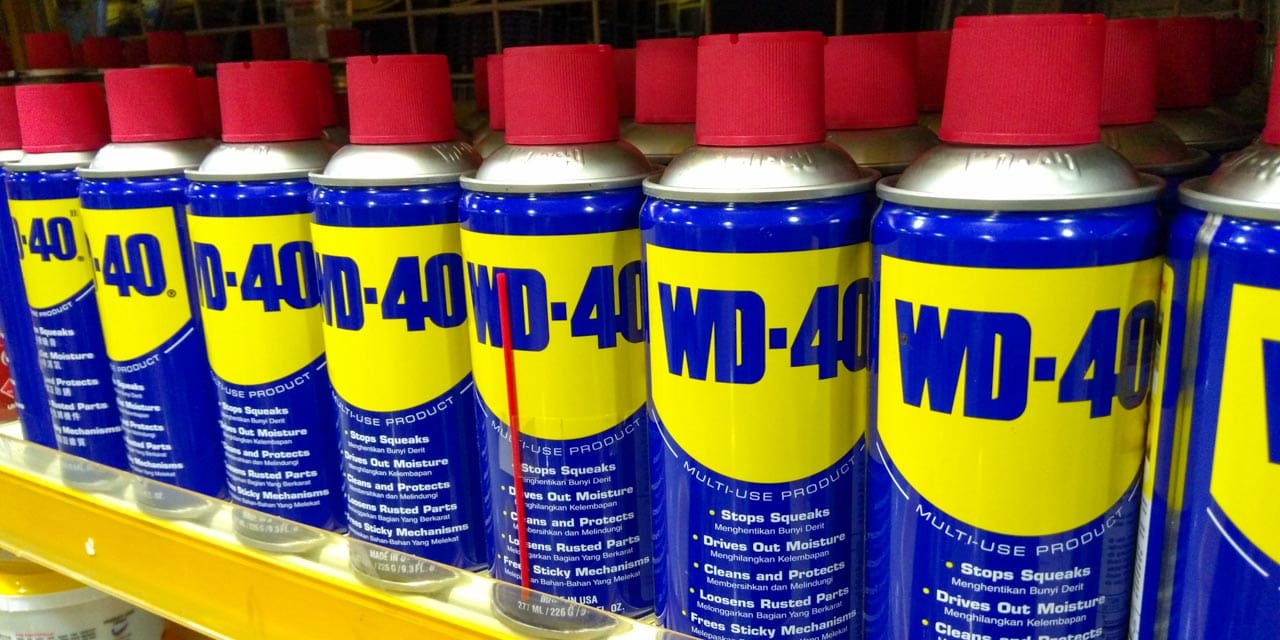

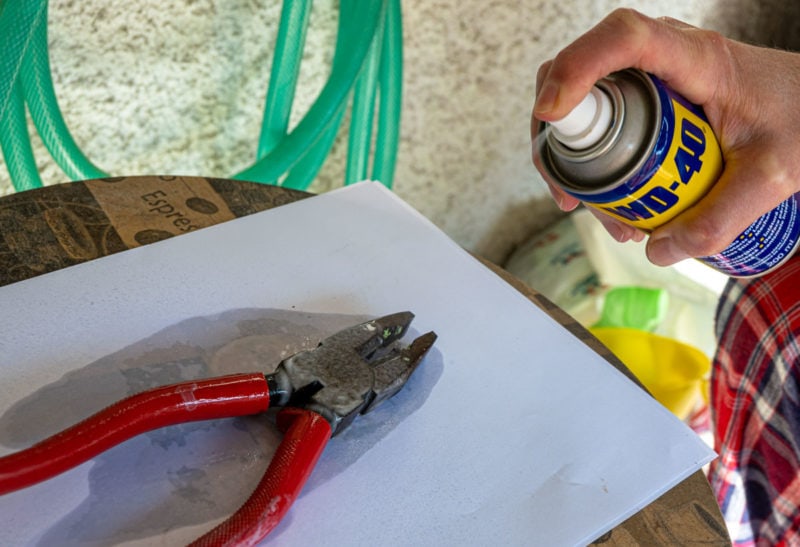


![WD-40 Specialist Cleaner & Degreaser, 24 OZ [Non-Aerosol Trigger]](https://m.media-amazon.com/images/I/41XIr8T9vvL.jpg)

